Many health-care workers have gone above and beyond throughout the COVID-19 pandemic, working long hours and trying their best to maintain connections with family and friends in their downtime. For BC Children’s Hospital Medical Microbiologist Dr. David Goldfarb, finding fun family activities on the weekend has, at times, meant incorporating them into COVID-19 sample collection.
As COVID-19 swept across the world in March and April, global supply chains were under tremendous strain. Dedicated experts in BC’s Children’s Hospital, BC Public Health Laboratory (PHL), the BC Centre for Disease Control (BCCDC) and PHSA’s Supply Chain understood the implications better than most. In a pandemic, testing is critical.
 David has travelled the Lower Mainland, sometimes with his family, for the past few months in an effort to reach volunteers who had tested positive for COVID-19 to evaluate a new sampling method. He has years of experience developing tests for resource-limited and remote settings, including Botswana and Nunavut. He and his family are used to looking for new, innovative ways to improve medical testing.
David has travelled the Lower Mainland, sometimes with his family, for the past few months in an effort to reach volunteers who had tested positive for COVID-19 to evaluate a new sampling method. He has years of experience developing tests for resource-limited and remote settings, including Botswana and Nunavut. He and his family are used to looking for new, innovative ways to improve medical testing.
“In the spring, it was tough to get samples as there were so few new people testing positive for the virus. My family would literally do trips out across the Lower Mainland on the weekends so that I could go to volunteers’ homes and collect samples for COVID-19 testing,” says David. “I was really impressed that so many people were willing to let me into their homes to collect samples, often when they were feeling unwell.”
So while his family checked out the local sites, David donned personal protective equipment and gathered samples from volunteers in various settings including their homes, their backyards, at hotels or in collection centres.
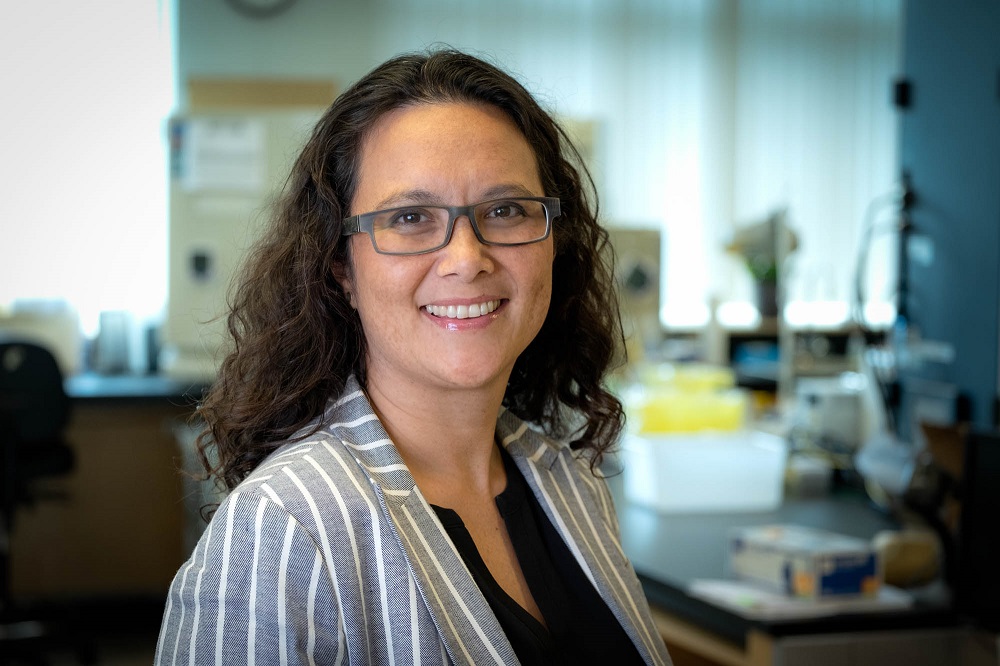 BCCDC Bacteriology & Mycology Lab Program Head Dr. Linda Hoang was watching for positive COVID-19 sample results and coordinating with David to ask patients to help validate the mouth rinse and gargle sample collection.
BCCDC Bacteriology & Mycology Lab Program Head Dr. Linda Hoang was watching for positive COVID-19 sample results and coordinating with David to ask patients to help validate the mouth rinse and gargle sample collection.
“We were doing this evening and weekends – as soon as possible,” says Linda. “I would flag Dave and then he would follow up. There was just this ongoing tag-teaming. We were constantly texting each other and videoconferencing to coordinate the work which often happened outside of regular hours. Like everyone involved, I found COVID-19 competed with my children, husband, and my own needs. It became challenging and stressful. But, I knew this was important to get right.”
These samples provided by the volunteers were crucial for validating the new mouth rinse and gargle sample collection method for COVID-19 testing that was officially announced on Sept. 17. It gives children in B.C. an alternative to the traditional nasopharyngeal swab, which many find uncomfortable.
The mouth rinse and gargle COVID-19 test is now the first of its kind in Canada, and B.C. is one of the first jurisdictions in the world to implement this type of sample collection method.
The conversation for the new test first began in April. David, Linda and PHL Medical Director Dr. Mel Krajden were discussing the need for swab independent self-collection methods, particularly given the global shortages of nasopharyngeal swabs for COVID-19 testing and some of the difficulties testing children with these types of swabs.
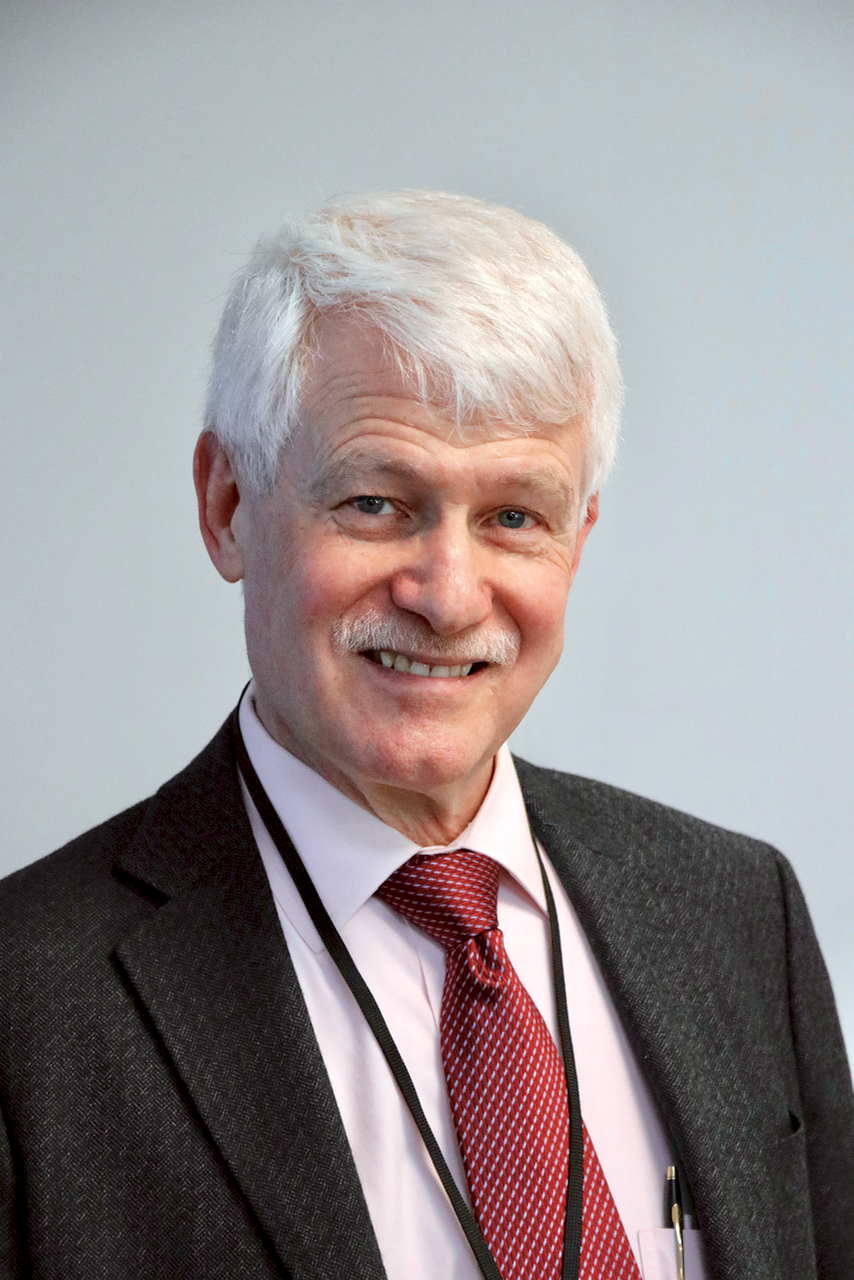 “We had been asked to look for self-sample collection ideas for tree planters, given their remote locations and lack of access to swab testing,” says Mel. “We read that gargle was a possible method for self-collection for virus tests.”
“We had been asked to look for self-sample collection ideas for tree planters, given their remote locations and lack of access to swab testing,” says Mel. “We read that gargle was a possible method for self-collection for virus tests.”
Linda suggested adding gargle to David’s study protocol and Mel mentioned a test that had used the mouthwash, Scope™, to collect samples.
“So I went and bought lots of mini Scope™ bottles and was planning to replicate that,” says David. “But actually virus RNA degraded quickly in that liquid so that wasn’t an option.”
Linda found other studies mentioning saline, or salt water.
“Saline looked quite good. The virus RNA was stable in it for several days,” says David.
In May, the team began collecting samples to validate the saline solution, to be compared with the nasopharyngeal swab test results.
They also looked at a saliva sample collection, but it took sometimes up to 10 minutes for people to produce the amount needed for testing and it missed several cases, especially in children, so that sample collection was ruled out.
By far, those tested preferred the rinse and gargle sample collection method.
“We were finding that the saline gargle samples were performing quite well,” says David. “Almost everybody gave it a ranking of five-out-of-five. The user acceptability was better than any other sample collection method we tested.”
The team reached the goal of having at least 40 positive and numerous negative participants for validation by the end of the summer, and reviewed their findings with the broader microbiology community in B.C. The BC Children’s and BCCDC laboratory technologists stepped up in order to process these samples often after hours and over the weekend.
“Once we knew it was working well and it was acceptable on multiple platforms, then we looked at incorporating it into clinical testing for school-aged children in B.C.,” David says.
With back-to-school coming up and the challenges of swab-collection tests with children, Provincial Lab Medicine Services (PLMS) recommended to public health leaders that this new COVID-19 sample collection be rolled out for children across the province.
“One of the benefits of the PHSA organization is that we have physicians, supply chain know-how, collection centre infrastructure and laboratory technical expertise all housed under one roof,” says PHSA Executive VP Donna Wilson. “So when it was time to scale-up to send this new sample collection method across B.C., we could do so in an incredibly short time frame.”
“There was a large group working on this and it speaks to how tightly knit we are,” said Linda. “While we had shown that the mouth rinse-gargle worked as a collection system, there were many pieces to still work out.”
Given the plan for ramping up testing, it quickly became clear a new container was needed for collecting the samples. The large urine-style containers were difficult to handle and took up too much space so the team found a supplier for funnel-shaped containers. The mouth rinse and gargle funnel also provided a cost savings.
“When supplies were low, we managed to find a reasonable supply of swabs, but they were really expensive… about six or seven dollars a swab. With the funnel system, it was one or two dollars each funnel so the cost was much lower,” says Linda.
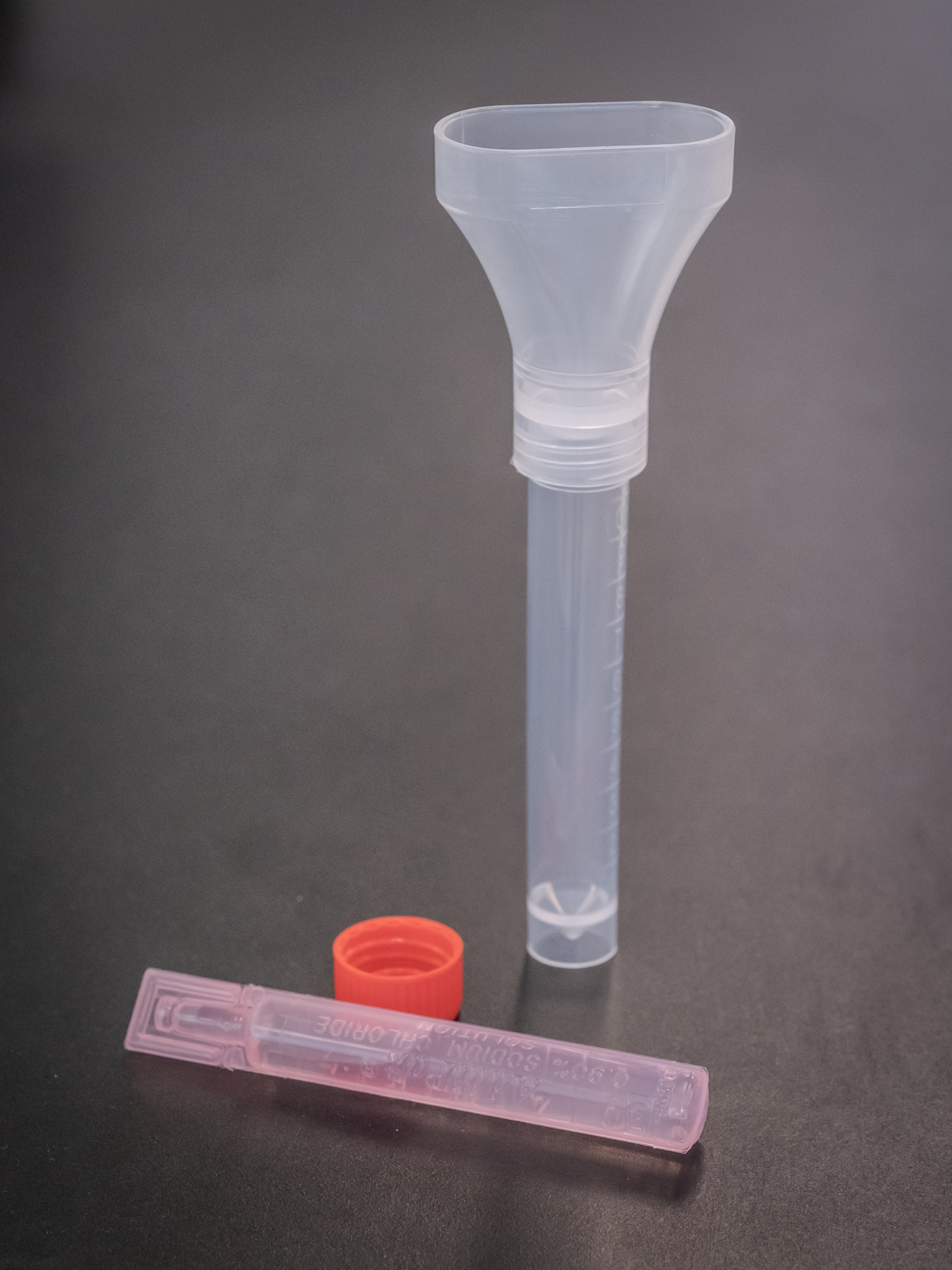 The team found a company that makes medical plastics in B.C. The company created some 3D prints that were reviewed by the team and one design was accepted. It has a small test tube and funnel that fits around a mouth. The design is efficient and compact. The province now has a commitment to produce the sample collection containers locally. PHSA is expected to transition to the local funnel supplier with an ideal design by mid-November.
The team found a company that makes medical plastics in B.C. The company created some 3D prints that were reviewed by the team and one design was accepted. It has a small test tube and funnel that fits around a mouth. The design is efficient and compact. The province now has a commitment to produce the sample collection containers locally. PHSA is expected to transition to the local funnel supplier with an ideal design by mid-November.
“With a local supplier, the reliability, the stability and the availability is there, especially during a pandemic,” says Dr. Blake Gilks, chief lab medical officer for the COVID-19 lab response.
The scale-up involved sending the new collection devices out to the 90+ collection centres across B.C. Awareness and training was needed for staff. BC Children’s Emergency Department Manager Sue Burgoyne helped develop instruction sheets and an instructional video for children to watch before being tested.
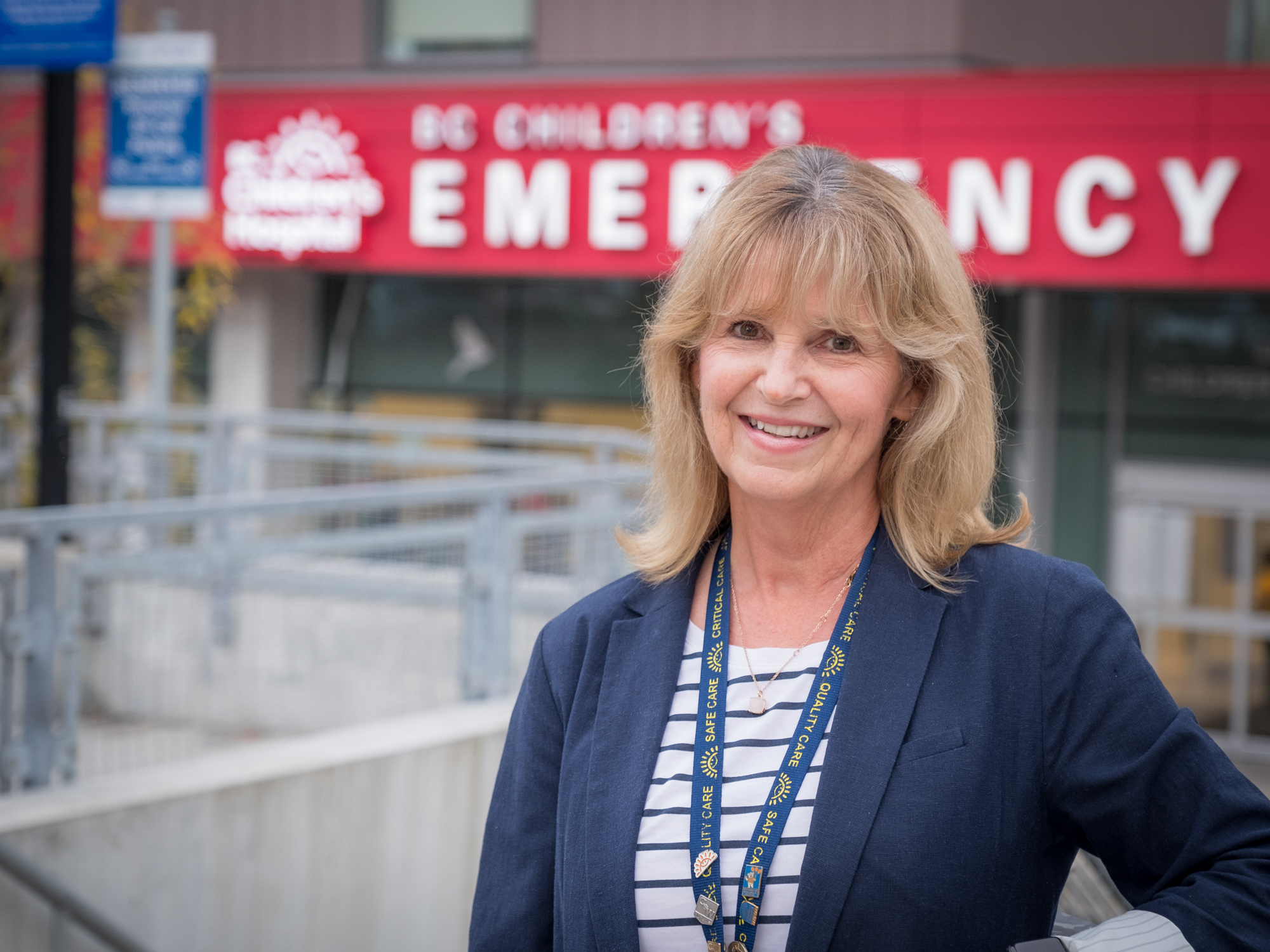 “The clinic nurses were crucial in this whole process. They adapted very quickly to provide coaching and guidance to patients and families in the self-collection of the gargle samples,” says Burgoyne. “I think families will appreciate that eventually they may not have to go in and get the nasopharyngeal swab. The gargle sample can even be collected at the drive-through testing sites for children five years of age and older.”
“The clinic nurses were crucial in this whole process. They adapted very quickly to provide coaching and guidance to patients and families in the self-collection of the gargle samples,” says Burgoyne. “I think families will appreciate that eventually they may not have to go in and get the nasopharyngeal swab. The gargle sample can even be collected at the drive-through testing sites for children five years of age and older.”
Validation panels had to be sent to labs to confirm that the saline gargle samples would work on the different machines so that testing can be performed across all accredited laboratories in B.C.
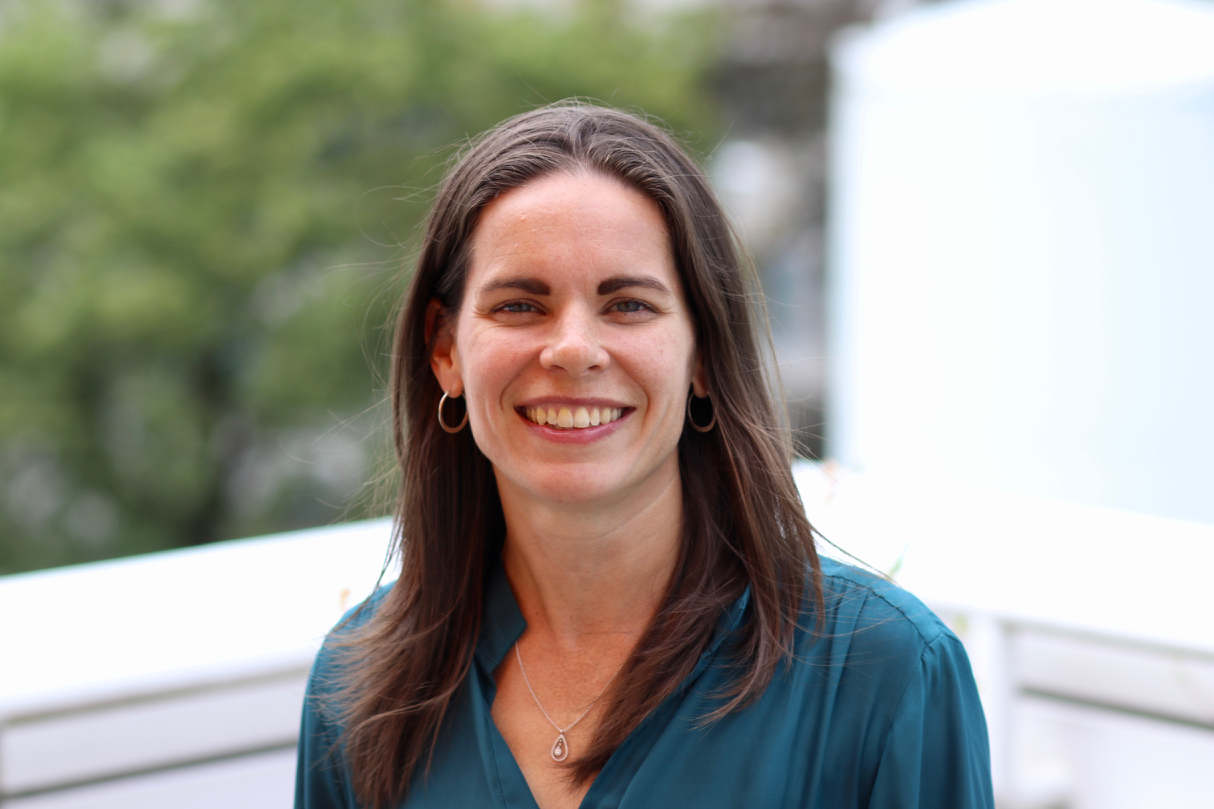 “Sending validation panels to the labs was one piece of the work needed, but the roll-out was more involved than that,” says Meghan McLennan, a project manager for COVID-19 special projects at BCCDC and operations lead for the provincial roll-out of the mouth rinse and gargle test at PLMS. “There was collaboration with health authorities across the province and PHSA Supply Chain was crucial in sourcing the collection devices as well as distributing them around the province.
“Sending validation panels to the labs was one piece of the work needed, but the roll-out was more involved than that,” says Meghan McLennan, a project manager for COVID-19 special projects at BCCDC and operations lead for the provincial roll-out of the mouth rinse and gargle test at PLMS. “There was collaboration with health authorities across the province and PHSA Supply Chain was crucial in sourcing the collection devices as well as distributing them around the province.
“We had less than three weeks to complete all the work needed. Collection kits arrived in Vancouver on Sept. 10 and still needed to be distributed throughout the province. We went live less than a week later which is a ridiculously fast timeline. All of a sudden, the tests were at most of the clinics across the province and the people using them were trained.”
David says the team has had their first review from B.C. collection centres and it was overwhelmingly positive. He has been contacted by health professionals and other interested parties across Canada and internationally. Nova Scotia, New Brunswick and Yukon have rolled the mouth rinse and gargle test out. Arizona and Quebec are in discussions to do the same. Canada's Department of National Defence is also currently validating samples.
“Everyone at PHSA who worked on this can be very proud of their contribution,” says Donna. “It’s one that will facilitate testing here in B.C. and potentially around the world. We know testing is key to reducing the spread of COVID-19.
